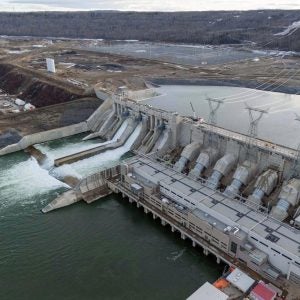The US Army Corps of Engineers, Bureau of Reclamation and Bonneville Power Administration signed a joint record of decision on 28 September which commits the agencies to implementing immediate and long-term actions related to the ongoing operations, maintenance and configuration of 14 federal dams that compose the Columbia River System. The decision means that four dams along the Lower Snake River – previously mooted to be removed – will stay.
The plan has been developed to balance the purposes of the dams, while specifically supporting ongoing and new improvements for species listed under the Endangered Species Act. The ROD sets out the reasons for selecting the preferred alternative published in the Columbia River System Operations final environmental impact statement as the alternative for implementation and affirms the agencies’ commitment to implement the National Marine Fisheries Service and U.S. Fish and Wildlife Service 2020 biological opinions.
“This selected alternative provides the best balanced and flexible approach to meeting the needs of the human and natural environment in the basin, both now and into the future. Our decision benefits the public interest, treaty resources and iconic fish species of the Pacific Northwest,” concluded Brig. Gen. D. Peter Helmlinger, commander of the Corps of Engineers’ Northwestern Division.
Through her assessment, Reclamation Regional Director Lorri Gray has determined that, “The selected alternative meets the purpose and need of the action and a majority of the EIS objectives, balancing the co-lead agencies’ abilities to meet statutory project obligations while also complying with the requirements of the ESA, Clean Water Act and other applicable laws.”
Key to the EIS process was the identification of mitigation actions to offset adverse impacts of the measures in the selected alternative and operation of the Columbia River System consistent with its congressionally authorized purposes. For example, BPA will fund additional protection and mitigation actions and will include those actions in its existing Fish and Wildlife Program. More than 30 entities from across the region, consisting of tribes, federal agencies, and state and local governments, agreed to participate as cooperating agencies in the process which is required under the National Environmental Policy Act.
“This process reflects our commitment to understanding all of the needs and interests related to the Columbia River Basin,” said acting BPA Administrator John Hairston. “We believe our decision today carefully balances the region’s needs for clean, reliable energy, supports the economic vitality of the communities that depend on the rivers, and includes durable actions that offset impacts on fish and wildlife affected by the Columbia River System.”
The co-lead agencies now are planning for implementation to ensure continued coordinated management of the system in a manner consistent with the selected alternative.
Built and put into service between 1938 and 1976, the 14 multiple purpose dams that comprise the Columbia River System are: Libby; Hungry Horse; Albeni Falls; Grand Coulee; Chief Joseph; Dworshak; Lower Granite; Little Goose; Lower Monumental; Ice Harbor; McNary; John Day; The Dalles; and Bonneville. A previous idea of removing the Ice Harbor, Lower Monumental, Little Goose Lock and Lower Granite Lake dams was rejected in favour of the preferred alternative.

The Lower Granite Lake Dam






